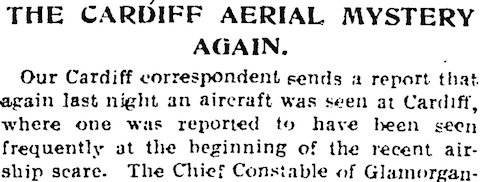Everybody’s doing it
‘Everybody’s Doing It’ was the name of a popular revue which opened in the West End in February 1912; the music and lyrics (including a near-eponymous song) were co-written by Irving Berlin. It was also the Manchester Guardian‘s stab at a contemporary pop cultural reference to describe just how widespread the phantom airship scare had […]






